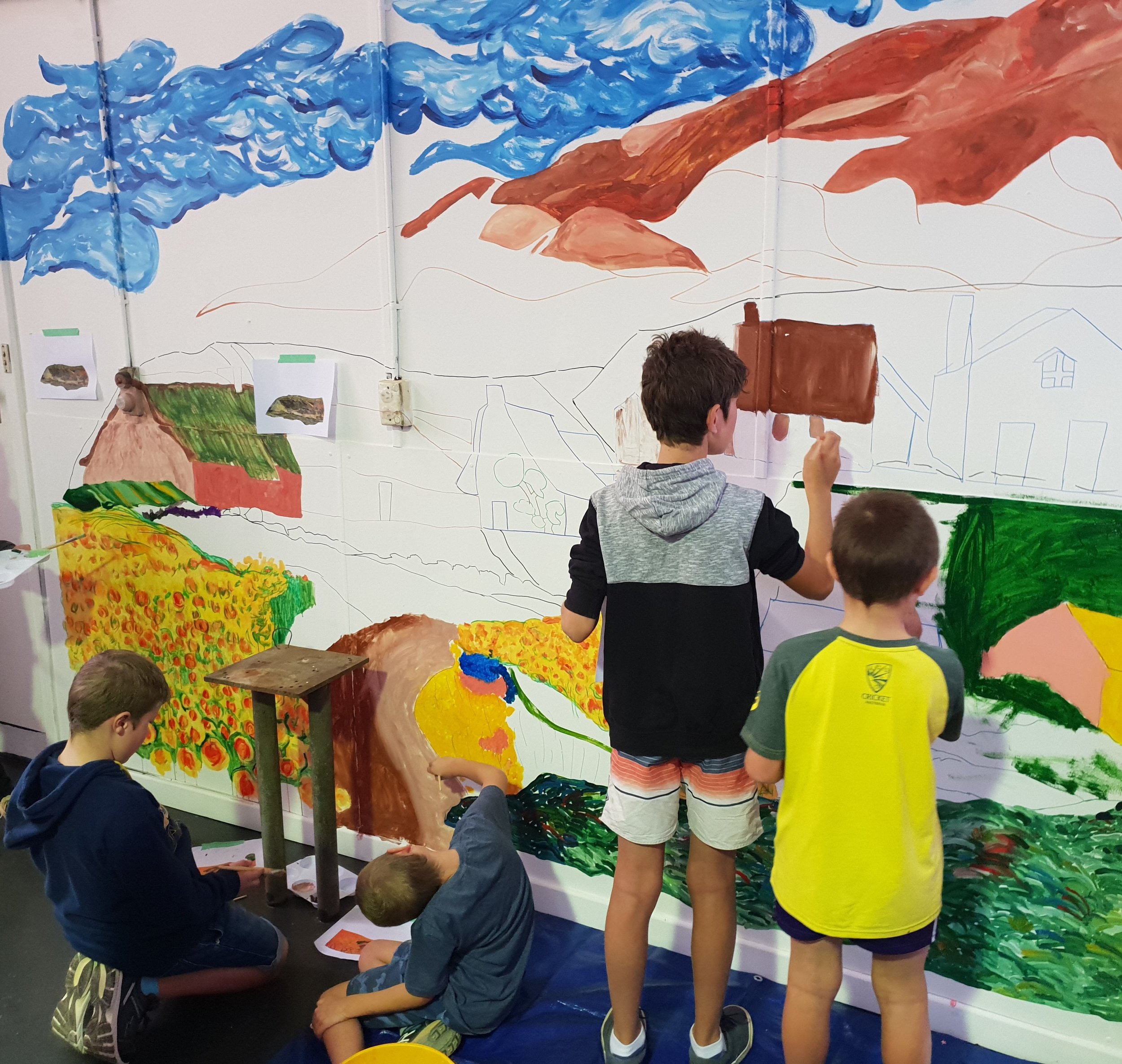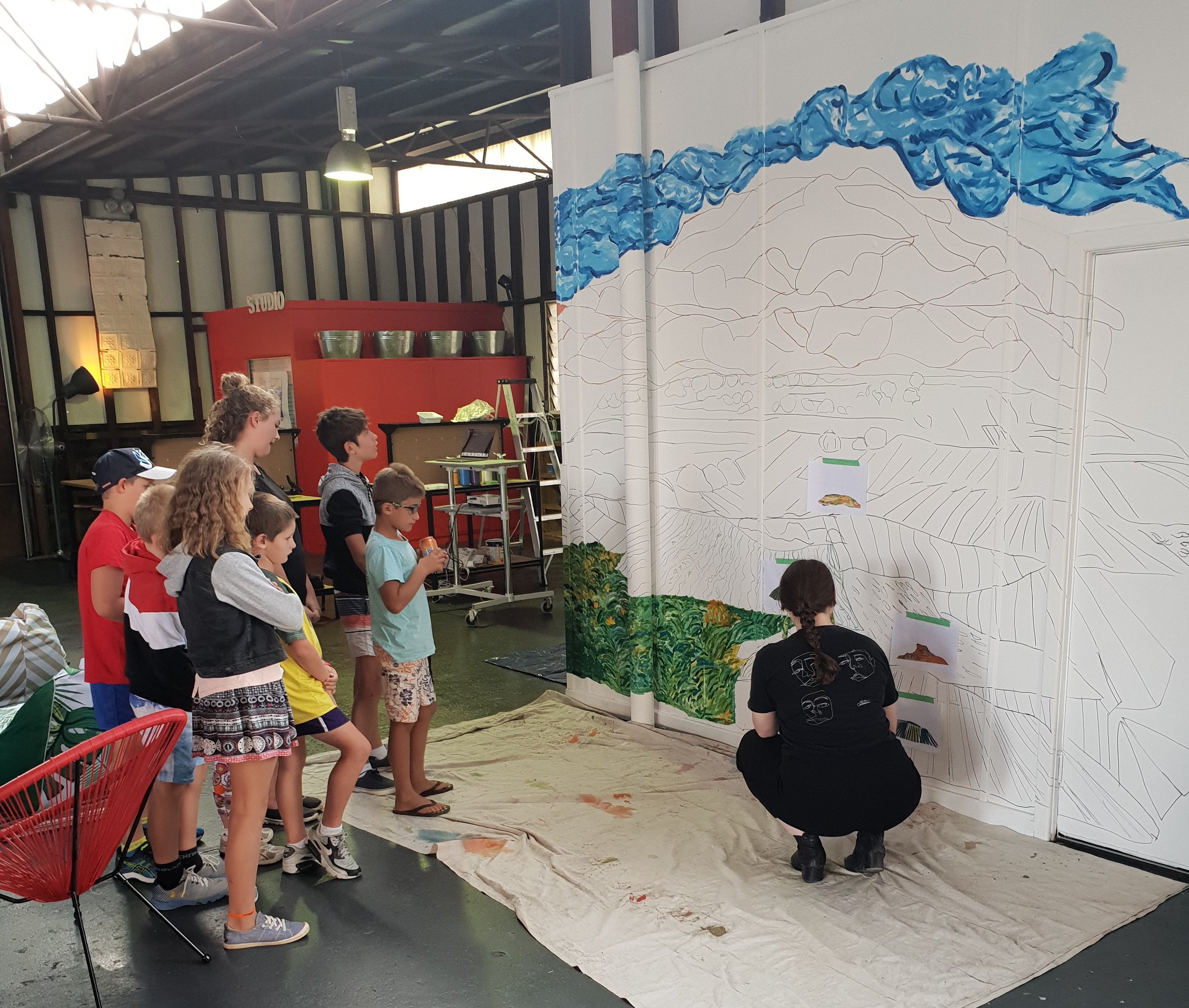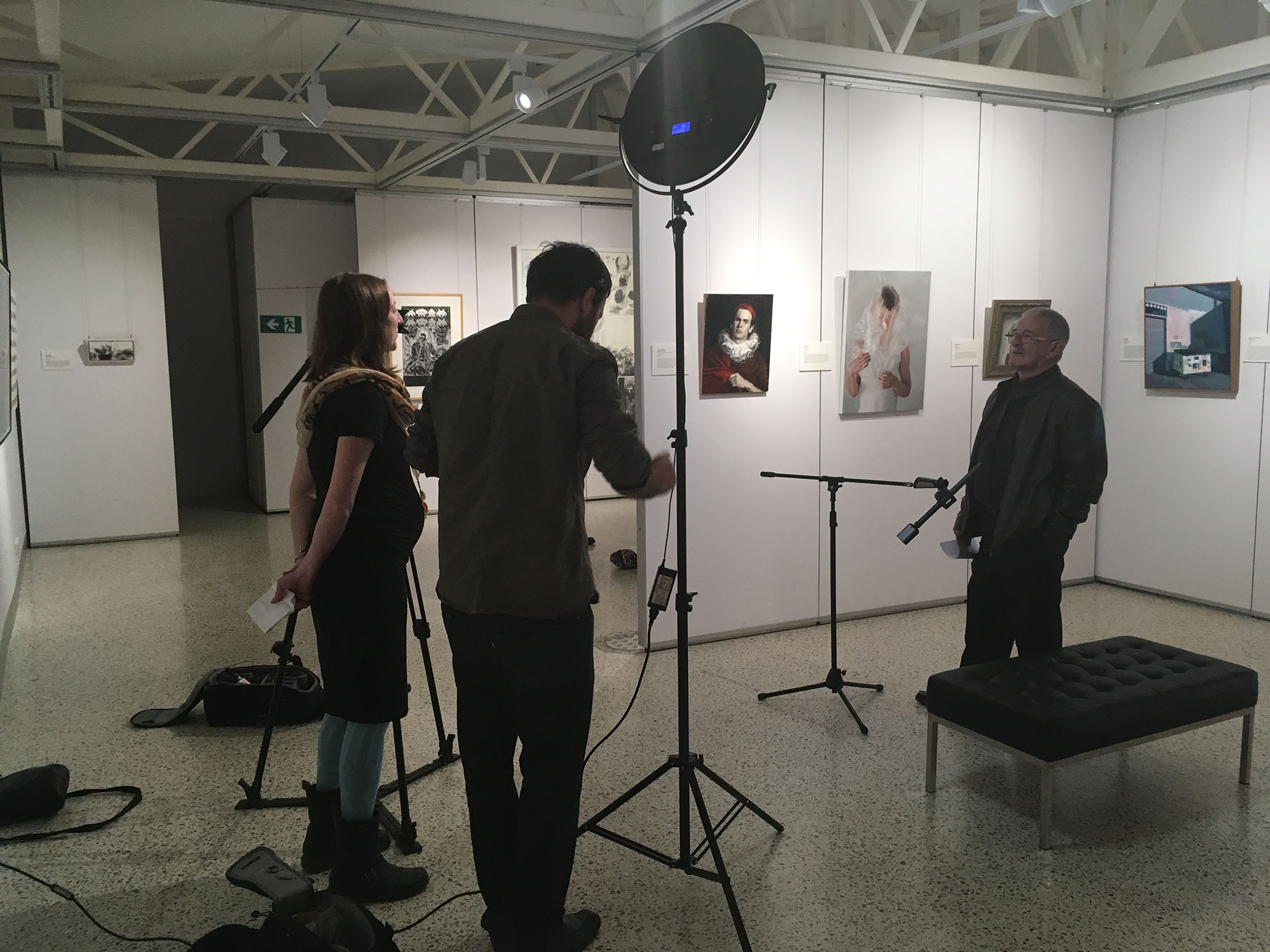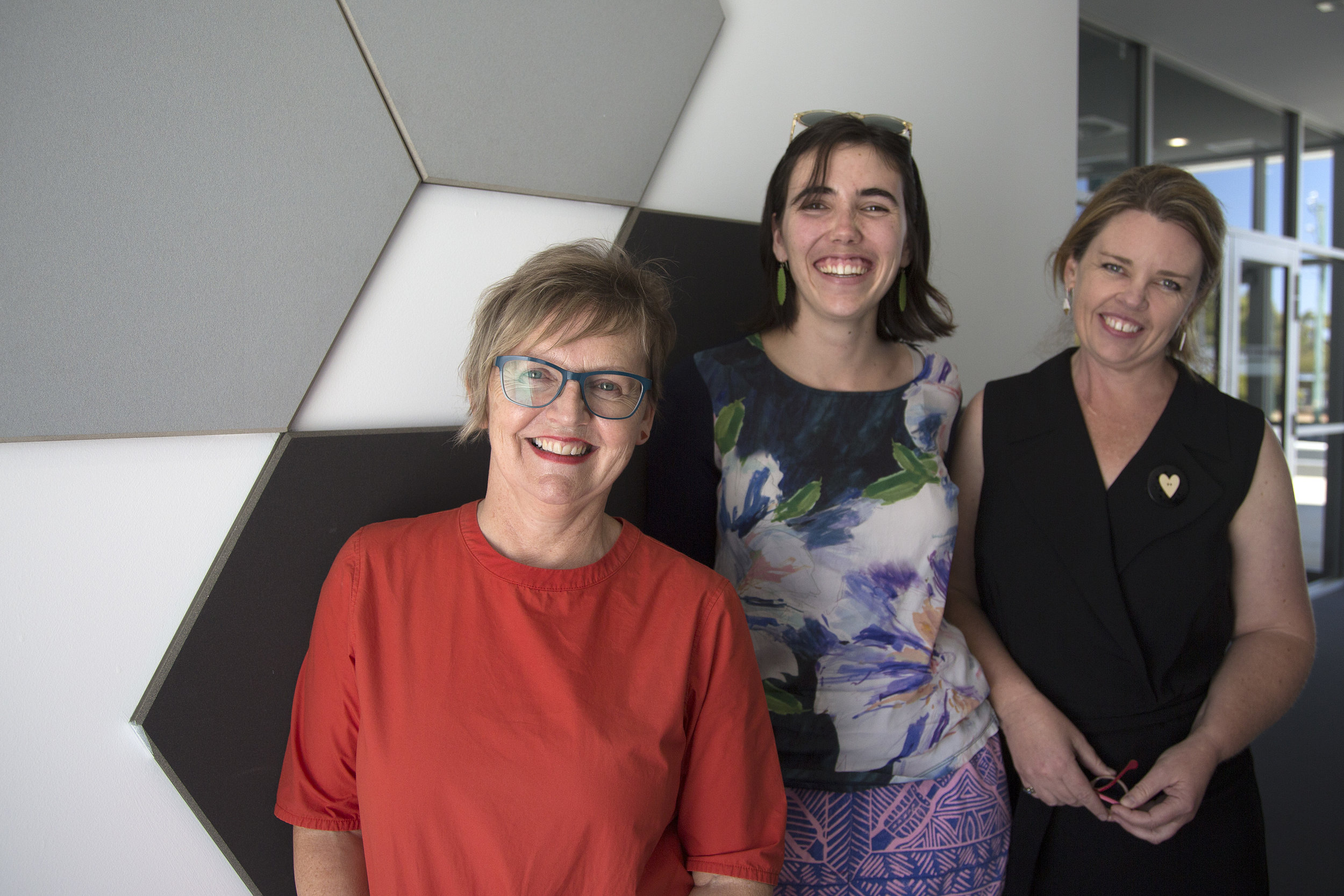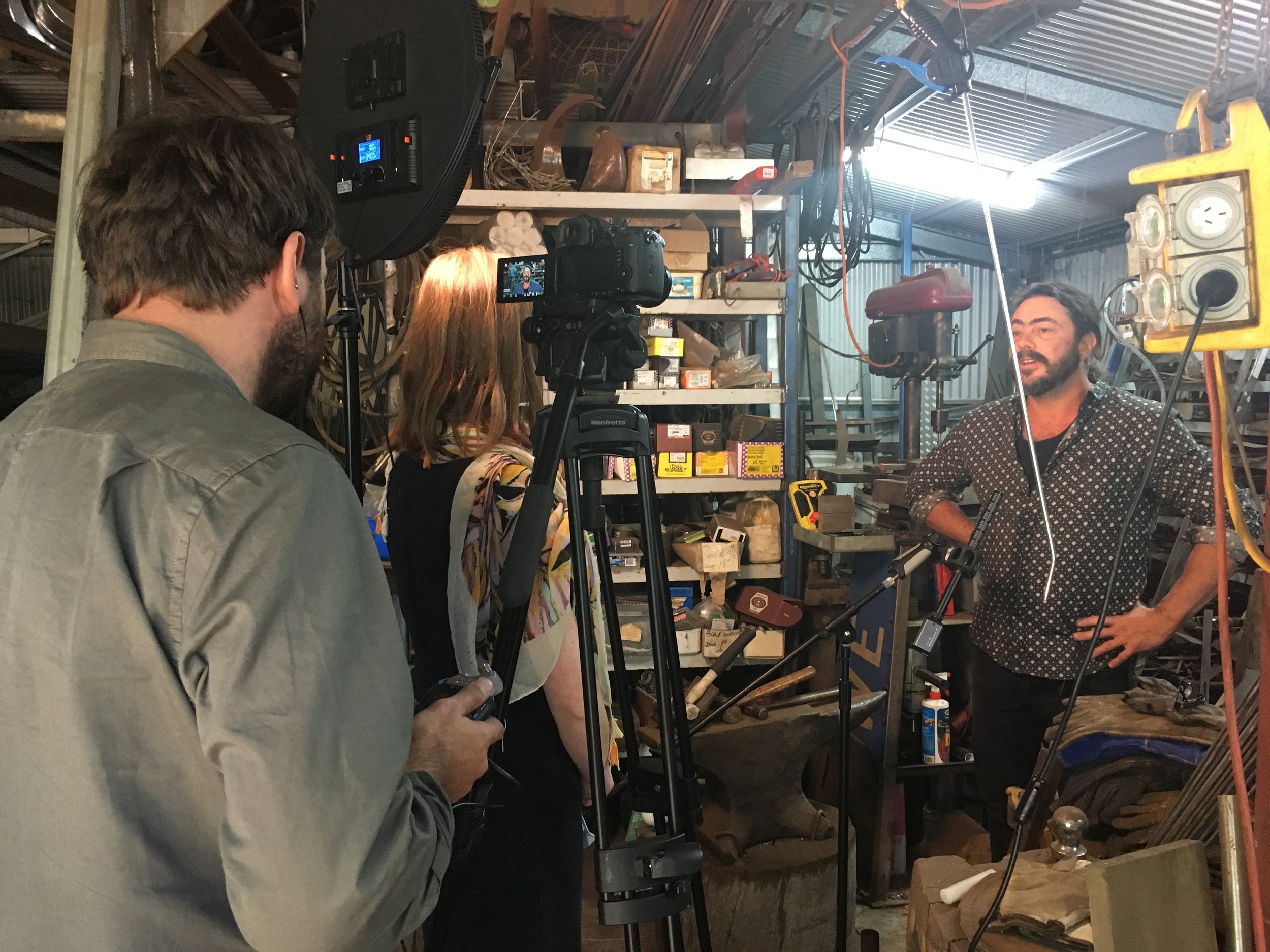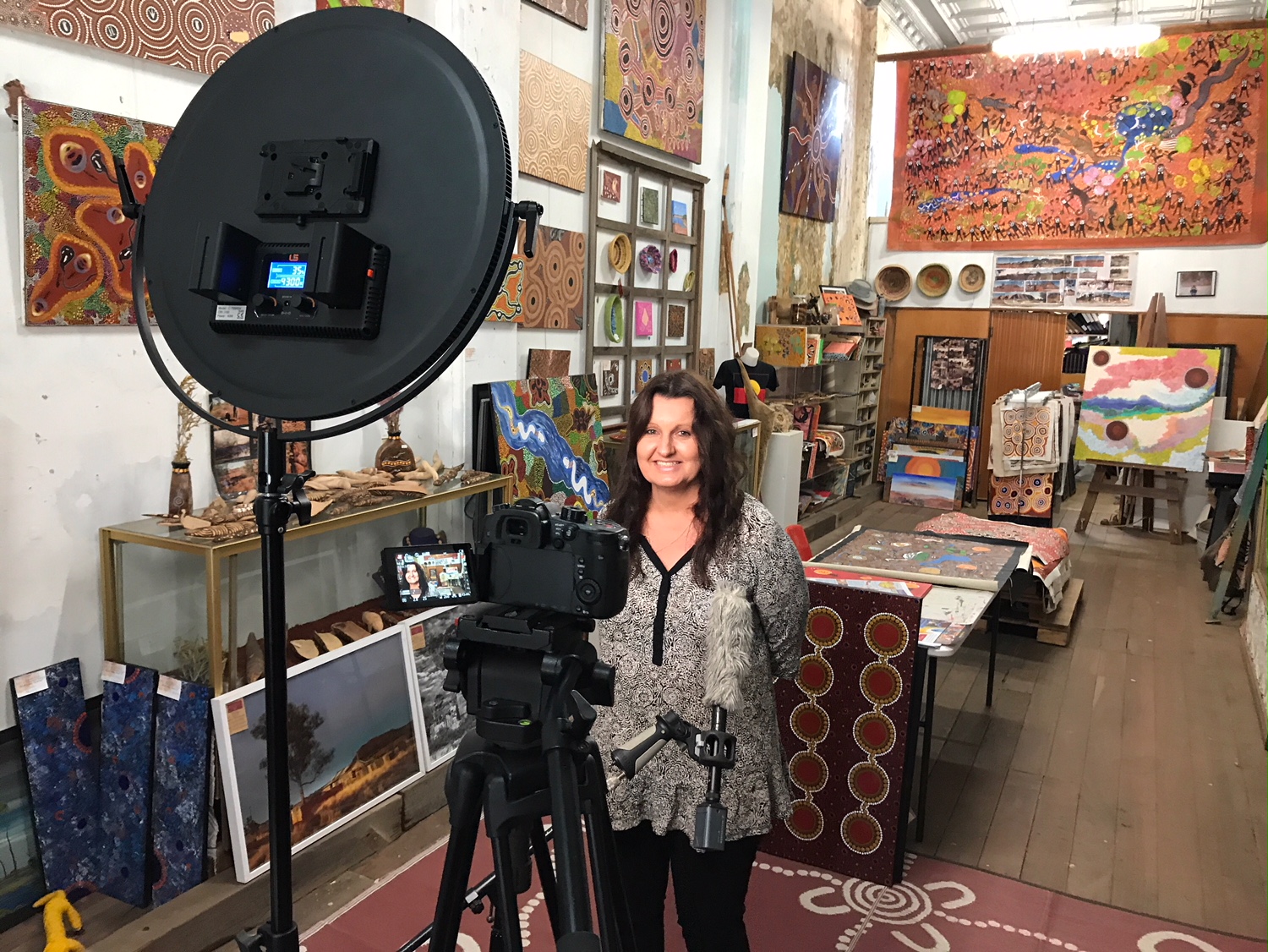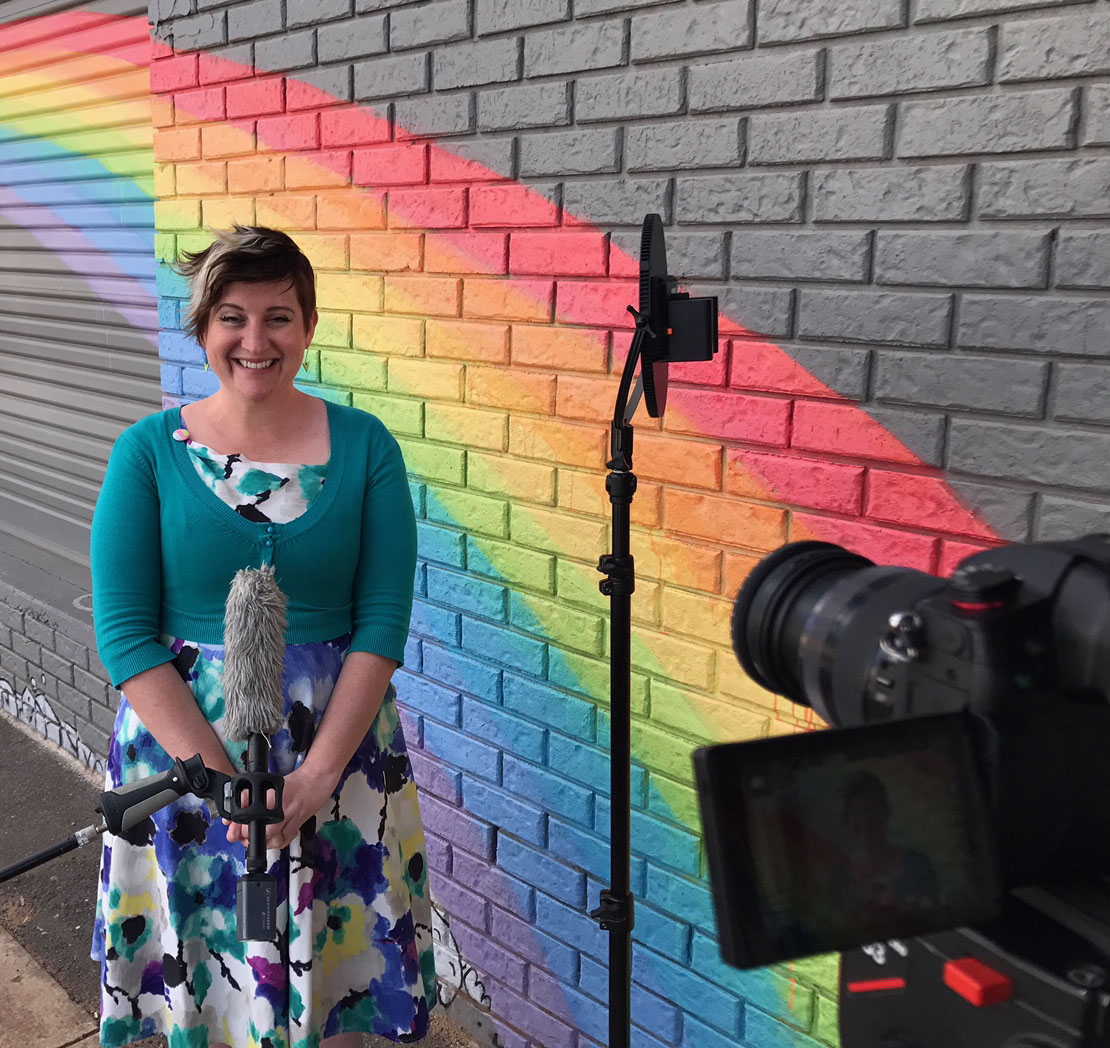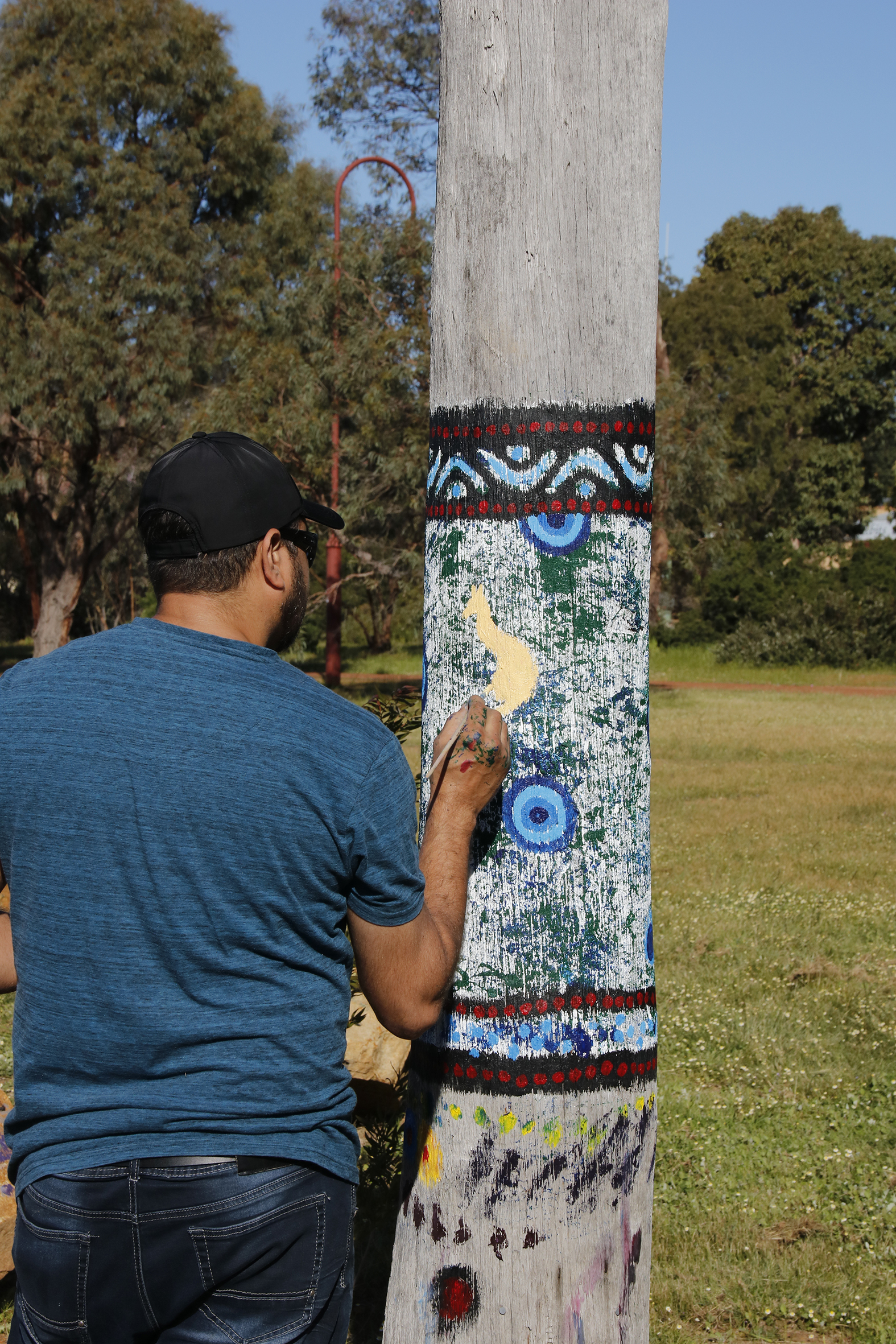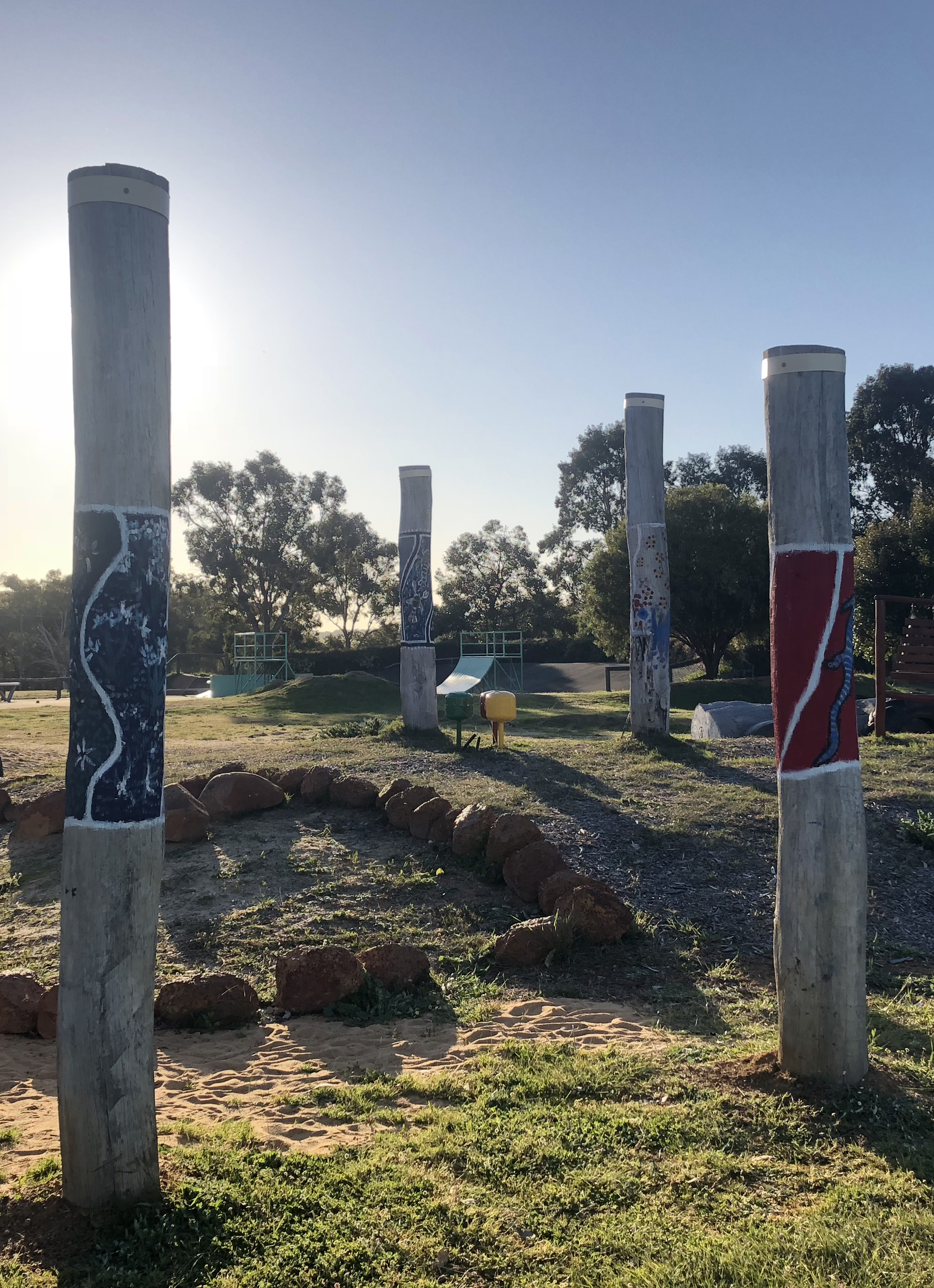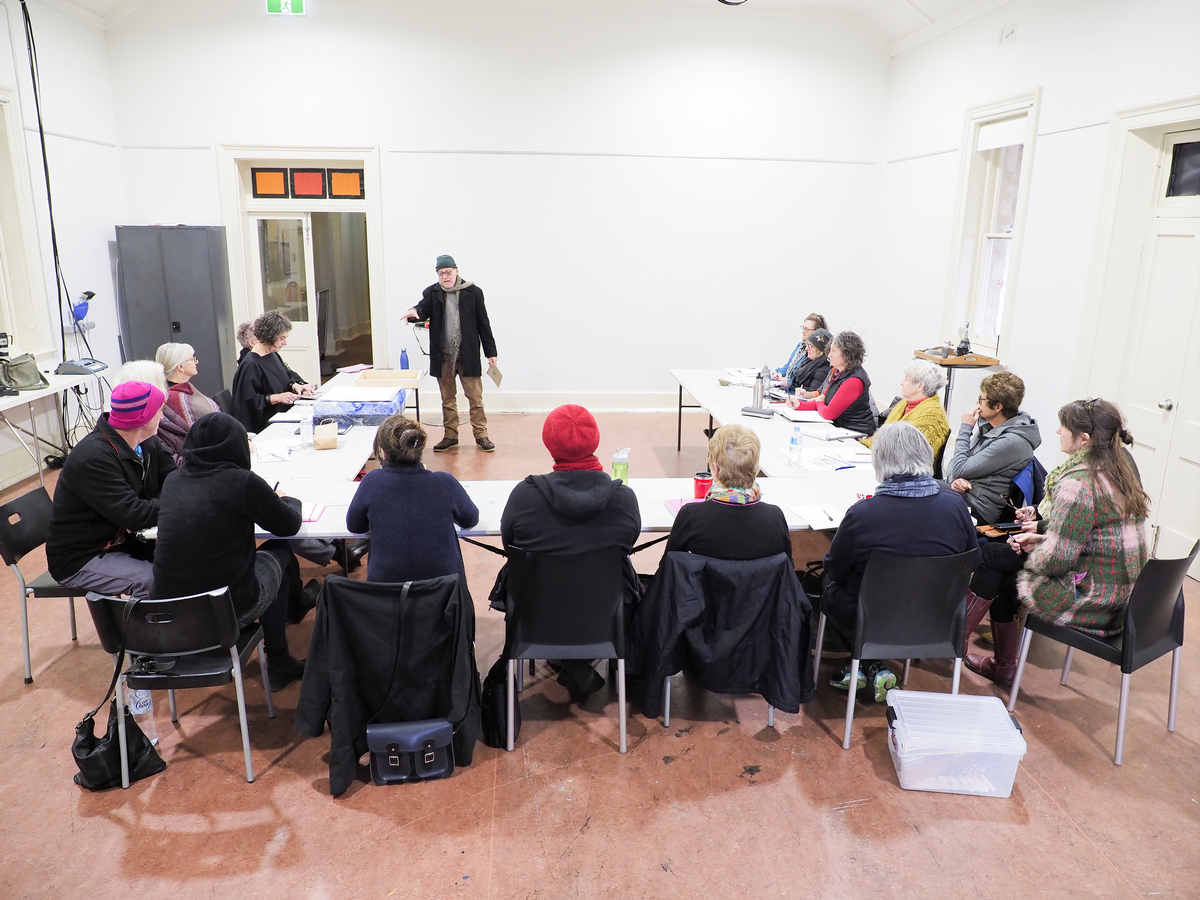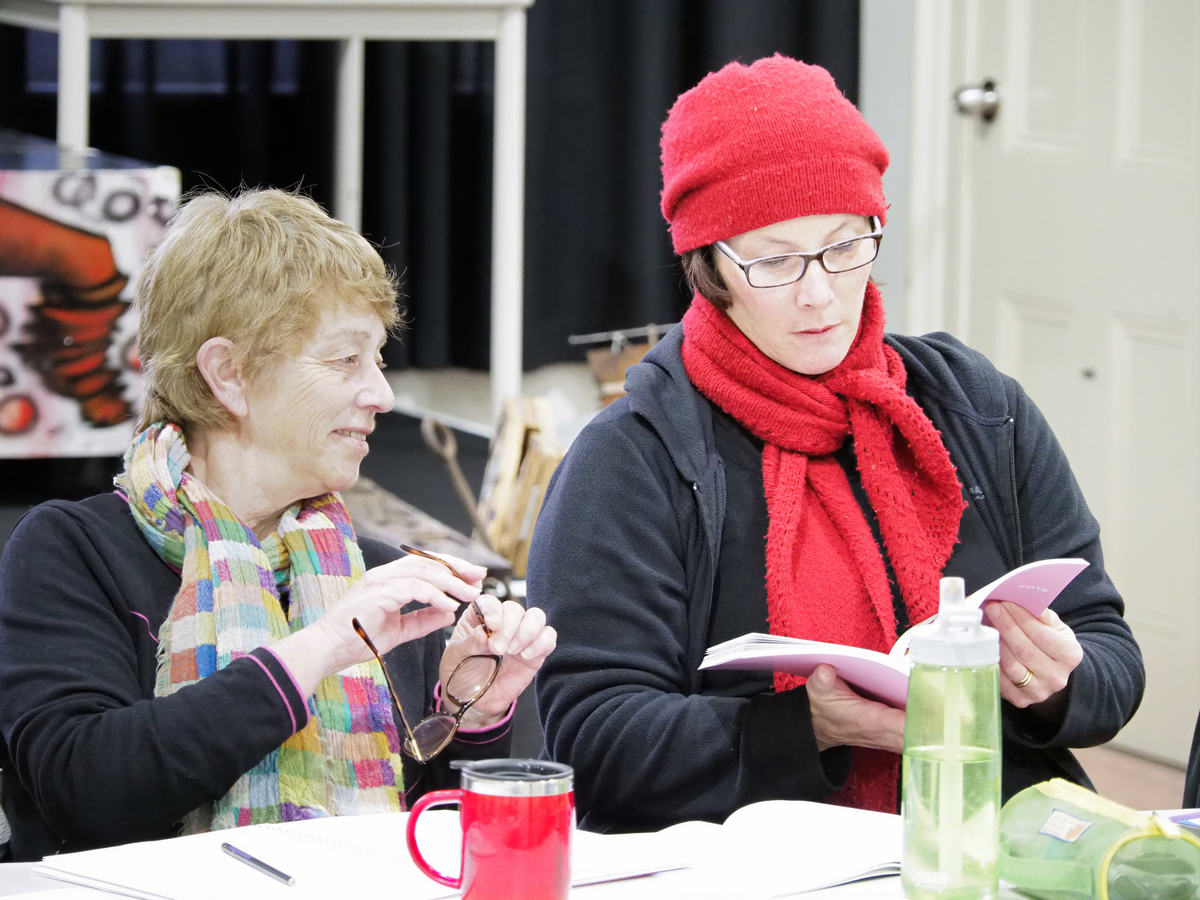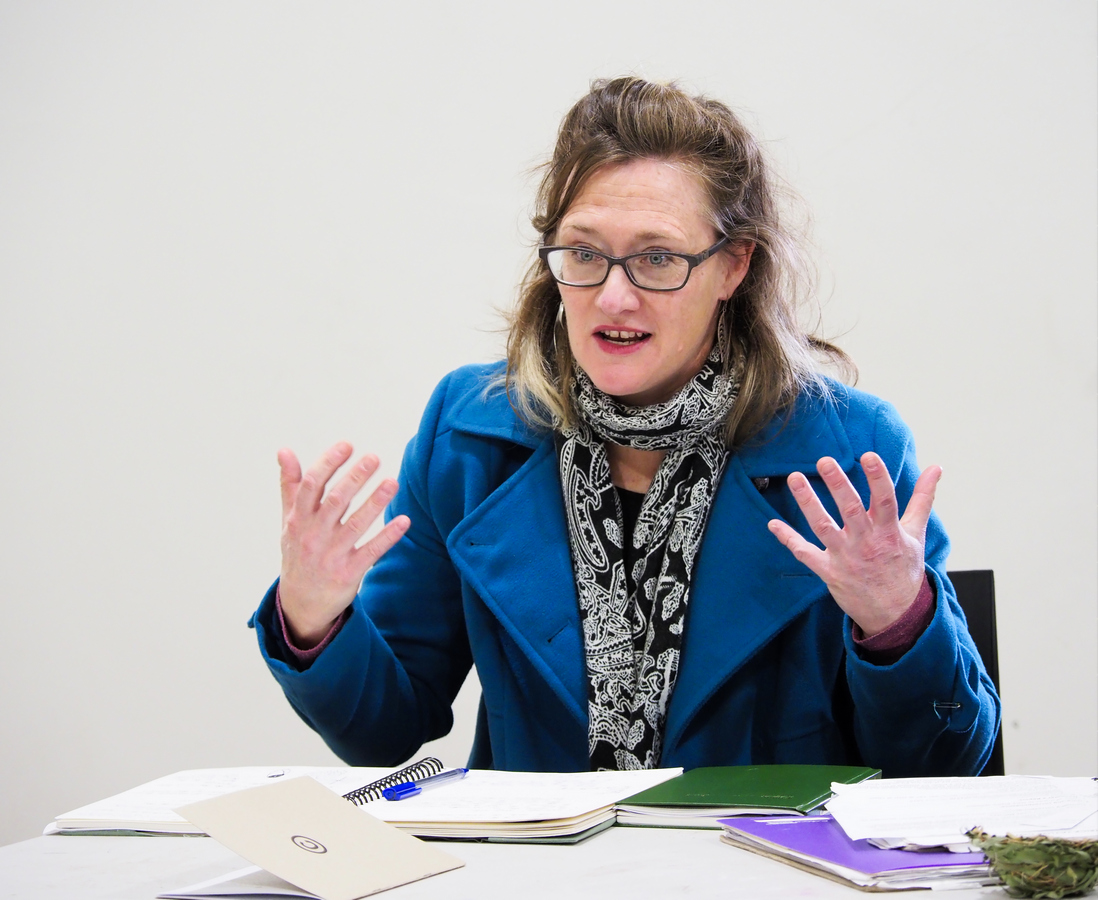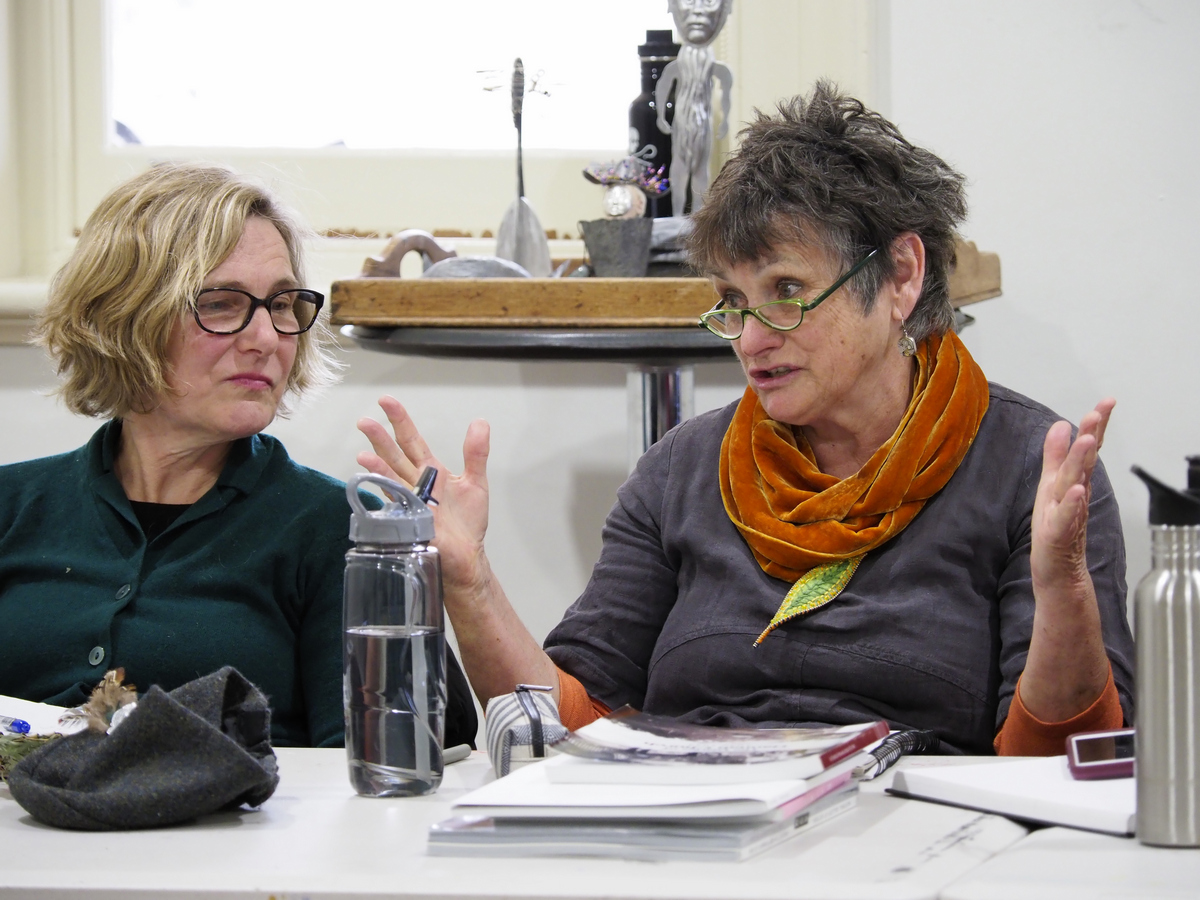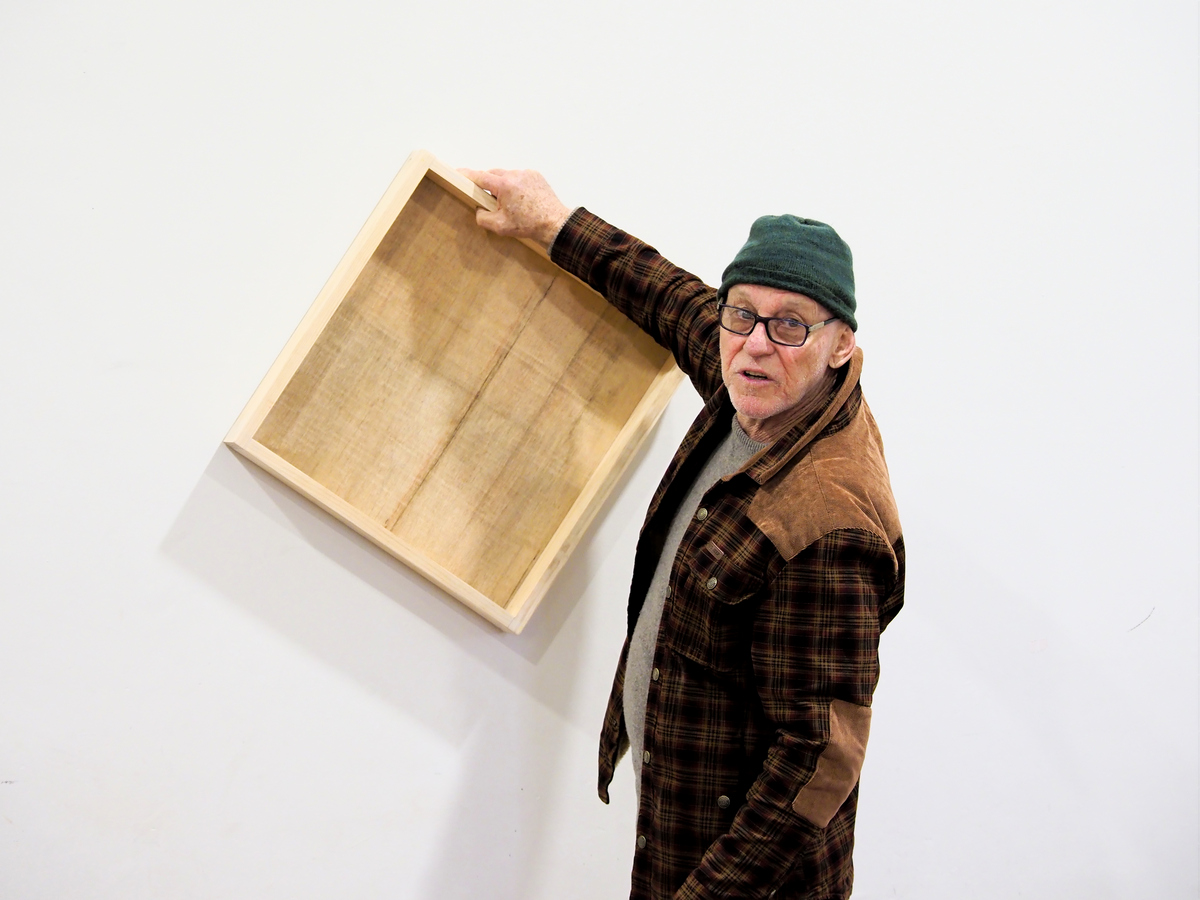THE CREATIVE GRID PARTNERSHIP
Rural Room is proud to support the Creative Grid, an initiative in Western Australia that is dedicated to empowering and enlivening regional WA communities through art. In the Creative Grid visual artists, arts professionals and arts organisations from across regional WA will engage nearly 40 local communities in an exciting series of interconnected and enriching arts experiences that enhance social, cultural and economic vibrancy.
Rob West (Mentor), Maitland Hill (Mentee) and Garay Aitken (Alcoa Mandurah Gallery Curator)
Over 50 Regional Arts Organisations, 7 state-wide Peak Arts Service Organisations and one state-wide industry advocacy body are connected to the project’s Implementation Stage (undertaking a series of projects collaboratively scoped, planned and resourced during 2017).
Working in partnership with organisations that release creativity within regional Australia to showcase the creative talent, ideas and stories buried within the bush is one of Rural Room’s critical objectives. Throughout 2019 Rural Room intends to draw awareness to the stories of the artists involved in the Creative Grid and the work they’re bringing to life.
The Creative Grid Project Coordinator, Fiona Sinclair shares the intentions and values of the project in an interview with Rural Room Editor, Bec Bignell.
Fiona, what motivated the concept of The Creative Grid?
Being based in regional Australia and working in the arts, I’m constantly observing how people build community and develop their sense of belonging and connection through art.
Often arts organisations and artists within communities operate in isolation and they don’t share resources, knowledge, or joy. The idea behind The Creative Grid is to celebrate and support each other in what we do and to find different ways of doing things. It’s about linking a collective of artists and arts organisations together from across the state to increase the exposure to their work and to explore a new way of working collaboratively. The Creative Grid is part of a bigger program – the Regional Arts Partnership Program - that is a pilot program focused on making a shift to structures of power around the allocation of funding in the arts- across every sector. It’s about building a greater sense of community and empowering regional arts. The Creative Grid is made possible by Country Arts WA, and the State Government of Western Australia.
Above: Community mural project, funded by Creative Grid, in the Midwest town of Carnamah, organised by the North Midlands Project. Children and youth worked with local artist, Gabrielle Butler, to design and paint the mural. It was based upon local landscapes inspired by techniques of the post-impressionists. Photo by Gabrielle Butler.
How is The Creative Grid different to other arts initiatives?
Traditionally arts funding allocation is competitive so it’s counter intuitive (as competition doesn’t build community, it strikes at the heart of community). How are we supposed to build community when actual funding programs that support it are based on competition? This particular funding program is different as its based-on collaboration. It’s based on trust, the spirit of generosity and sharing which is radical and it’s great! It’s anchored in an emergent style of leadership and community building. One of the things we are looking at is part of leaning into the unknown, the idea of collaboration and reaching towards each other. It means we’re invested in the idea, that we’re not necessarily sure where we will arrive, but we trust that exploring art collectively will land us in a better place. It’s also a unique opportunity to look at new ways of doing things in the arts sector.
In the Creative Grid we’re coming from a position of abundance. When you remove the competition it changes everything, this is revolutionary for a funding program. It’s also unique given it’s coming from the regions- not from the metropolitan area. Often, the most interesting things happen on the edge and the fringe, which means it’s ground-breaking.
Above: Images from the process of creating the Artspiration film series
What is your role within the Creative Grid?
I’m managing the collaboration and co-creation, and it’s much like I’m in the centre of a bicycle wheel and all the various spokes (projects and artists) extend out. It’s not designed to operate as a centralised model, but we are programmed to centralisation it seems! I oversee and coordinate all the moving parts.
Above: Nonngar artist, John Walley ran a community painting project in the Wheatbelt town of Darkan to celebrate the six Noongar seasons. Photo by Kym Gibbs.
How did you come to work in the arts space?
My dad is a shearer and I grew up on a farm, on the Goomalling side of Toodyay. To be honest, I didn’t really have access to the arts until I went to Perth. Interestingly my sisters and I are all really arty-one is a writer the other is very creative, visually. I think the influence came from my mother, however, my Dad was a non-drinker and had a very feminine energy even though he was a very a masculine man. He understood creativity, so we weren’t ever discouraged from pursuing it. I went to boarding school and had an amazing art teacher. In year 11, I found home through art as I didn’t find home in the city. Art was the only place that felt safe. It was the only place I could retreat. I topped the state in TEE Art and then I decided that I’d do it my own way- I’m still working out which way that is! I’m completely self-taught, I have no credentials but I’m just a very curious person and I feel that creativity and culture are integral to our sense of belonging. I come from a small community, I live in a small community and I never want to live in anywhere other than in a small community. I love that I have access and exposure to so many incredible artists and projects and that I can work in this space from the comfort of my sanctuary out here in the sticks.
Above: Images of artists in Albany discussing their approach to a group exhibition they are developing through the Creative Grid in response to a project brief called, The Alternative Archive. The photos are by Bob Symons.
Are there any challenges you’ve encountered in conceptualising and delivering The Creative Grid?
Yes, there are always inherent challenges when you’re trying to implant change. There is a real push pull struggle between emergence and the binary and linear. The reaction speeds need to be much quicker and it relies on a very high level of trust given it’s an essential part of collaboration and this is a collaboration on a mass scale. I expect we might make some mistakes along the way and that’s important and very authentic. I’m happy to admit mistakes if we make them as that’s what we’re learning from - it’s how we can build the muscle and move forward. We will also transfer the knowledge we acquire and the insights we glean to others in the sector, we will share what we discover to help other arts organisations.
Mid-west artists meet to discuss the Alternative Archive at GRAG, 2018
What does a partnership with Rural Room mean to you?
Artists are not great at telling the stories of what we are doing and why it’s important. It’s something we can do better, and we need to do better. Connecting with Rural Room is really important, because collectively when we work together we can better share our stories. People may not be that interested in one individual story but if they see its part of a movement or groundswell then they might prick up their ears. Exposing the universal experience through art and connecting people from the city to the country through a stories or artistic expressions of humanity will also help us bring suburban and regional communities together. If the Creative Grid is successful we may be able to even look at implementing the model to connect across state boundaries in a national program. Rural Room is a platform that will allow us to widely share the work we are doing to communities across Australia. Hopefully, people will engage with the stories and work of the artists so it can make wide scale impact, inspire people and bring people together in creativity.



